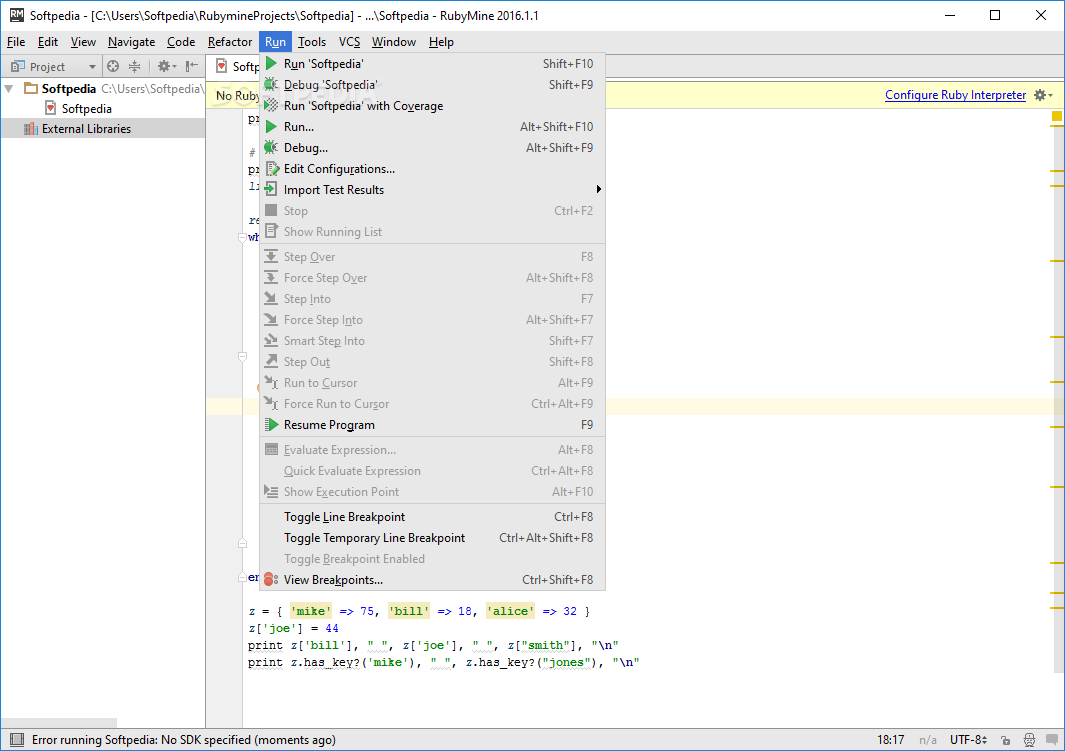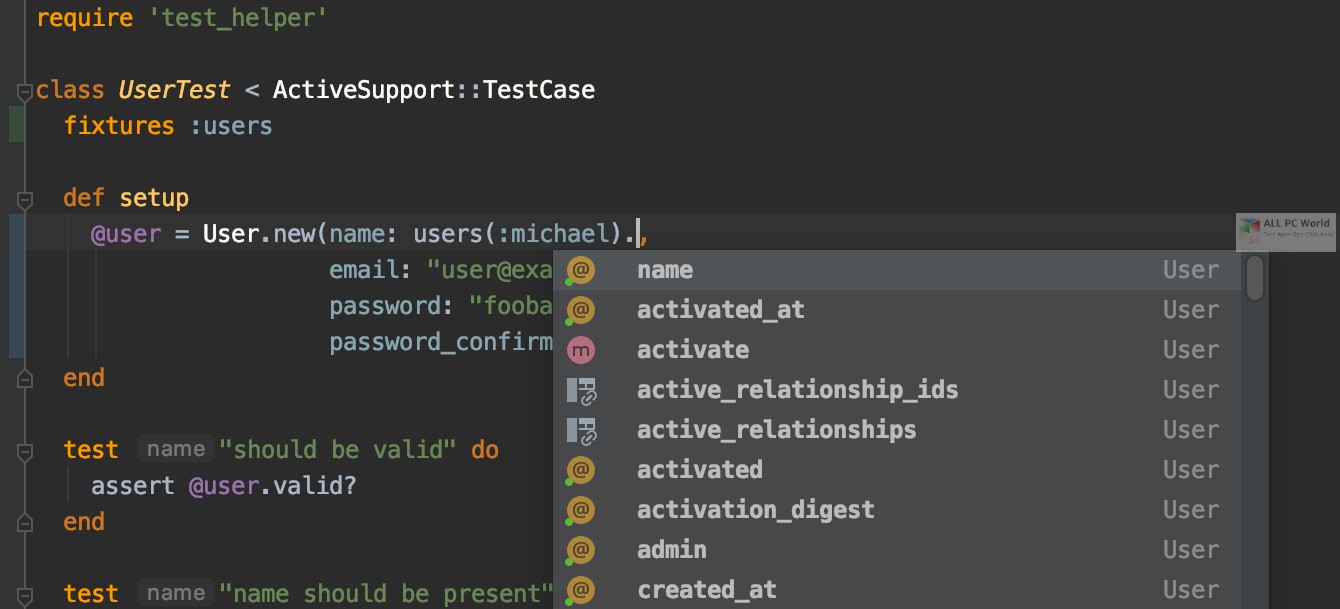
- #RUBYMINE FREE FOR FREE#
- #RUBYMINE FREE HOW TO#
- #RUBYMINE FREE INSTALL#
- #RUBYMINE FREE PATCH#
- #RUBYMINE FREE FULL#
What Is the Difference Between IDEs and Editors?Īn IDE is a software application that provides a developer with all the development process capabilities. But their cost, compared to a web developer’s salary, is not high, so that you can focus on convenience.
#RUBYMINE FREE FOR FREE#
Most IDEs are paid, with the ability to download and use for free for a while. Please, make a choice according to your taste and other technologies that you need to use in conjunction with JavaScript. If you haven’t thought about choosing an IDE yet, look at the following options below.
#RUBYMINE FREE HOW TO#
The term IDE (Integrated Development Environment) means an editor extended with a lot of “bells and whistles” and knows how to work with auxiliary systems such as a bug tracker, version control, and much more.Īs a rule, the IDE loads the entire project to provide autocompletion for the whole project’s functions, convenient navigation through its files, etc. Therefore, you can choose any tool based on your needs and preferences.īut first, let me make it clear for you what IDE is and what the difference with a simple code editor. The first does not mean the best the last does not mean the worst. Let’s make a reservation right away that this is not the top list, but the simple list. That is why I have compiled a collection of 21 best Javascript IDEs with their pros and cons. Writing code is everyone’s business, but many have problems with choosing the right program. Many editors meet all the necessary requirements and are suitable for working with JavaScript. Our list of the best Javascript IDEs should help you to decide. Therefore, it is better to take something specialized. However, using such a limited editor would greatly slow down development.

js extension, and it will not only connect to the site but even work. You can write JavaScript code in a regular “Notepad” – save the result with the. We post product news and tips several times a week.Īs always, we encourage you to share your thoughts in the comments below and to create and vote for features in the issue tracker.Nowadays, Javascript is getting more and more popular in front-end development. To learn about the newest features as they come out, please follow RubyMine on Twitter.
#RUBYMINE FREE FULL#
The full list of closed tickets in this EAP build is in the release notes. You are welcome to download the latest EAP build from our website or via the Toolbox app.
#RUBYMINE FREE INSTALL#
You can install the EAP version alongside a stable version of RubyMine.This is pre-release software, and it may not work as intended.The EAP version of RubyMine is free to use.They are now all created in the Git format. In light of these concerns, we’ve changed the default format for patches. We’ve received feedback that this was inconvenient and slowed work down.
#RUBYMINE FREE PATCH#
In the past, the patch format varied depending on the VCS that was used. Pull into Current Using Rebase is used instead of Rebase Current onto Selected.Pull into Current Using Merge is now used instead of Merge into Current.

We’ve renamed a couple of actions for remote branches:

You can now see all the actions related to the current branch: The IDE now automatically corrects disallowed symbols in the names of new branches, which helps you quickly create branches according to the accepted format: Several enhancements in this EAP touch upon branches. When you click Commit, all the files from the Staged node will be committed. You can also stage changes right from the gutter: click the highlighted part and select Stage.Īnother way to add your updates to the staged files is via Show Diff.

To unstage files, click the – icon or select Unstage in the context menu. The file will appear under the Staged node. When you are ready to stage your file, click the + icon next to it, or right-click the file and select Stage in the context menu. Now your Commit view contains Staged and Unstaged files. Go to Preferences/Settings | Version Control | Git and select the Enable staging area checkbox. Let’s see how.įirst, you need to enable this feature. The long-awaited staging for Git is here! In RubyMine 2020.3, you’ll be able to stage right from the IDE. Note: this functionality is only available for the Commit tool window. When you launch a new Terminal instance, it will specify which exact version is being used: The built-in Terminal emulator now uses the version of Ruby that is selected for the project. Terminal now uses the Ruby version from the project RubyMine 2020.3 EAP7 is now available! Here are the most important features that this build brings:


 0 kommentar(er)
0 kommentar(er)
